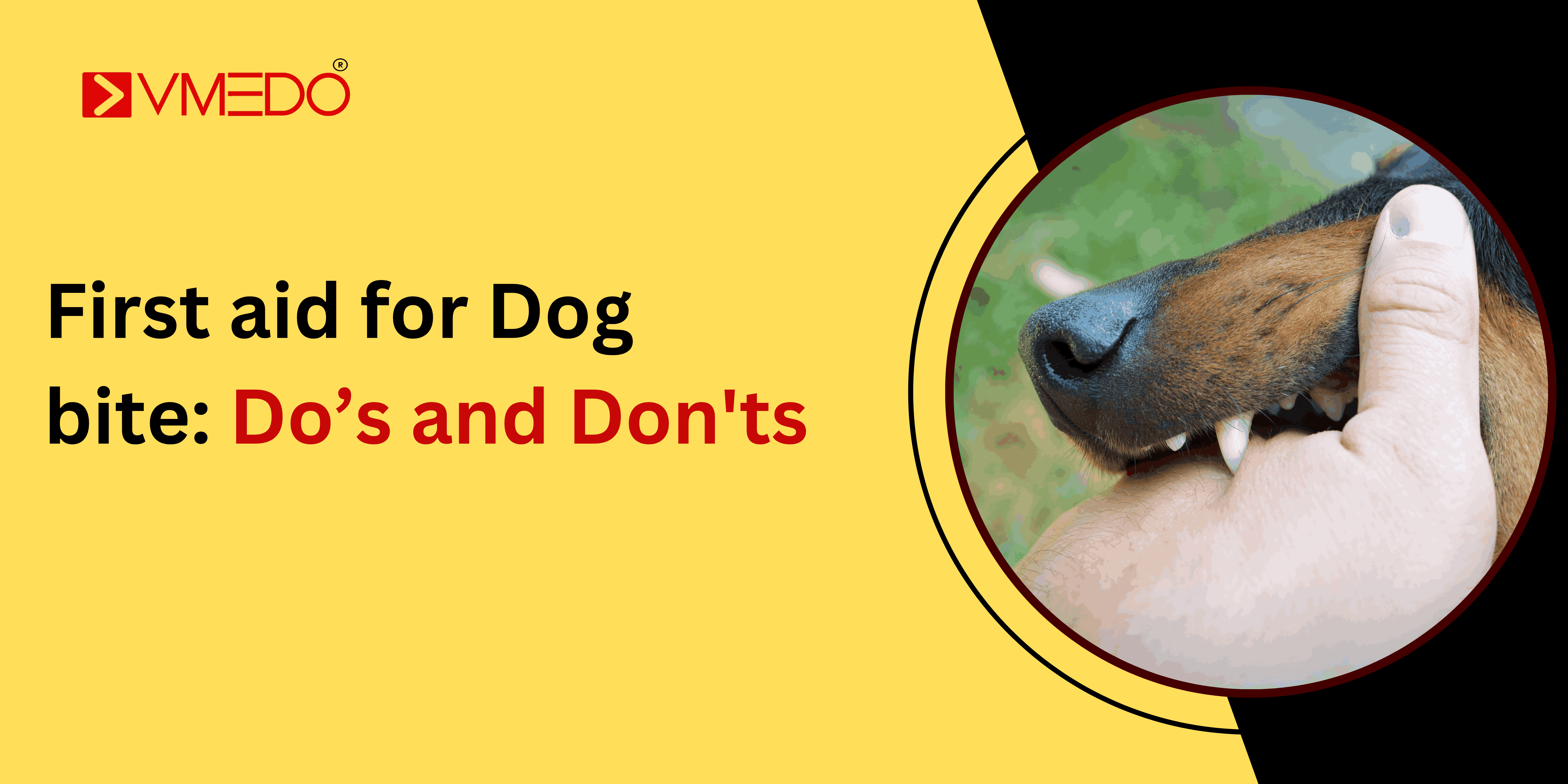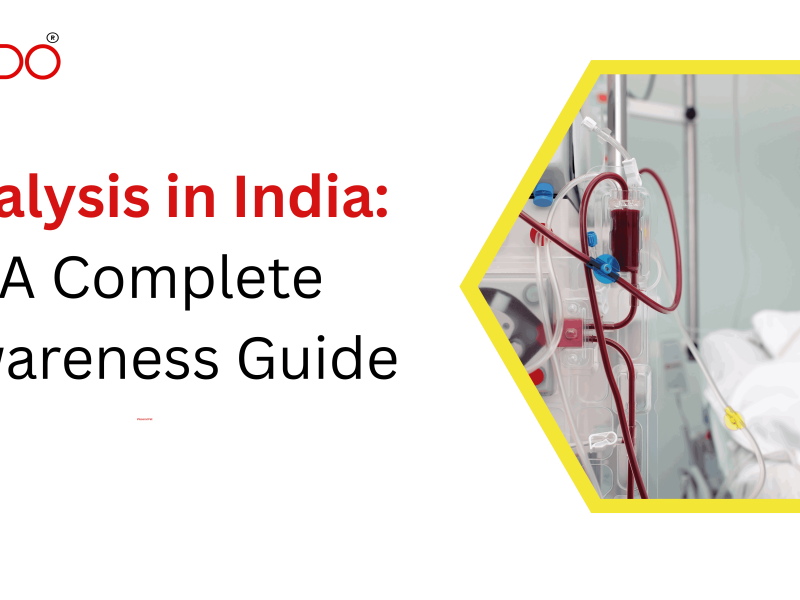Dog bites can happen unexpectedly and can be a distressing experience for both the victim and the pet owner. While prevention is key, knowing how to administer first aid promptly can make a significant difference in the outcome. In this article, we’ll discuss essential first-aid measures for dog bites, empowering pet owners with the knowledge to respond effectively in such situations. Before learning first aid for dog bites, let’s understand the risks associated with dog bite.
Risks associated with Dog bites:
Dog bites pose various risks to individuals, ranging from physical injuries to potential infections and long-term psychological effects. Here are some key risks associated with dog bites:
- Physical Injuries: Dog bites can result in a range of physical injuries, including puncture wounds, lacerations, abrasions, and tissue damage. The severity of the injury depends on factors such as the size and breed of the dog, the force of the bite, and the location of the bite on the body.
- Risk of Infection: Dog bites carry a high risk of infection due to the bacteria present in the dog’s mouth. Common infections resulting from dog bites include cellulitis, abscesses, and septicemia. Additionally, there is a risk of contracting rabies if the dog is infected with the rabies virus.
- Tetanus: Dog bites can introduce tetanus-causing bacteria into the body, leading to tetanus infection. Tetanus is a serious bacterial infection that affects the nervous system and can cause muscle stiffness, spasms, and respiratory problems.
- Psychological Trauma: Dog bites can have long-lasting psychological effects on the victim, especially if the incident is traumatic or if the victim develops a fear of dogs (cynophobic). Children, in particular, may experience anxiety, nightmares, and behavioral changes following a dog bite.
- Scarring and Disfigurement: Severe dog bites can result in scarring and disfigurement, especially if the bite wounds require surgical intervention or leave permanent tissue damage. Scars may have cosmetic implications and impact the individual’s self-esteem and quality of life.
- Transmission of Zoonotic Diseases: In addition to rabies, dog bites can transmit other zoonotic diseases, including pasteurellosis, bartonellosis (cat scratch fever), and leptospirosis. These diseases can have serious health consequences if left untreated.
- Legal and Financial Consequences: Dog bites may lead to legal and financial repercussions for both the dog owner and the victim. Depending on the circumstances of the bite, the dog owner may be liable for medical expenses, compensation for pain and suffering, and legal penalties.
- Social Isolation: Individuals who have experienced dog bites may become socially isolated or avoid situations where they may encounter dogs, impacting their quality of life and social interactions.
First aid steps for a dog bite
- Understanding Dog Bites:
-
-
- Dog bites can range from minor scratches to severe puncture wounds, depending on the size and aggressiveness of the dog.
- It’s essential to assess the severity of the bite and the risk of infection, especially if the dog is not vaccinated against rabies.
-
- Immediate Steps to Take:
-
-
- Remain calm and try to separate the dog from the victim to prevent further injury.
- Wash the wound with soap and water for at least 5 minutes to remove bacteria and debris.
- Apply pressure to control bleeding if the wound is bleeding profusely.
-
- Assessing the Wound:
-
-
- Examine the wound for signs of infection, such as redness, swelling, or pus.
- If the wound is deep, large, or located on the face, hands, or genitals, seek medical attention immediately.
-
- Treating the Wound:
-
-
- Apply an antiseptic solution or antibiotic ointment to the wound to prevent infection.
- Cover the wound with a clean, sterile dressing or bandage to protect it from further contamination.
-
- Monitoring for Complications:
-
-
- Keep a close eye on the wound for signs of infection, such as increasing pain, redness, swelling, or fever.
- Seek medical attention if the wound shows signs of infection or if you’re unsure about the appropriate course of action.
-
- Rabies Risk:
-
-
- Determine the rabies vaccination status of the dog involved in the bite.
- If the dog’s vaccination status is unknown or if there’s a risk of rabies, consult a healthcare professional immediately for rabies post-exposure prophylaxis.
-
- Follow-Up Care:
-
- Follow any additional instructions provided by a healthcare professional, such as completing a course of antibiotics or getting a tetanus shot if necessary.
- Keep the wound clean and dry, and monitor it closely for signs of healing or infection.
-
Don’ts for a Dog bite?
During a dog bite incident, it’s crucial to know what actions to avoid to prevent further injury or complications. Here are some things NOT to do during a dog bite:
- Do Not Panic: Remaining calm is essential during a dog bite incident. Panicking can escalate the situation and increase the risk of further injury.
- Do Not Run Away: Running away from a dog may trigger its predatory instincts and lead to a chase, increasing the likelihood of additional bites. Instead, try to remain still and avoid sudden movements.
- Do Not Provoke the Dog: Avoid making sudden movements, yelling, or behaving aggressively towards the dog, as this may escalate the situation and lead to more aggression.
- Do Not Attempt to Separate Fighting Dogs: If multiple dogs are involved in a fight, do not attempt to intervene physically. Trying to separate fighting dogs can result in serious injuries to yourself. Instead, try to distract the dogs by making loud noises or throwing objects away from them.
- Do Not Approach Unknown Dogs: Avoid approaching unfamiliar dogs, especially if they are exhibiting aggressive or fearful behavior. Respect the dog’s space and avoid actions that may provoke it.
- Do Not Attempt to Handle Injured Dogs Without Proper Training: In the event of a dog bite, avoid attempting to handle injured dogs without proper training or protective gear. Injured dogs may be frightened or in pain and may lash out defensively.
- Do Not Neglect Medical Attention: Even if the dog bite appears minor, it’s essential to seek medical attention promptly. Dog bites can introduce bacteria into the wound, leading to infection and other complications if left untreated.
- Do Not Ignore Signs of Infection: After a dog bite, monitor the wound closely for signs of infection, such as redness, swelling, warmth, pus, or increased pain. If you notice any signs of infection, seek medical attention immediately.
- Do Not Delay Reporting the Incident: If you or someone else has been bitten by a dog, report the incident to the relevant authorities, such as animal control or law enforcement, as soon as possible. Reporting dog bites helps track and manage potentially dangerous dogs in the community.
Frequently Asked question ( FAQ’s) on Dog bites
- What should I do immediately after a dog bite?
-
-
- Wash the wound with soap and water.
- Apply pressure to control bleeding if necessary.
- Seek medical attention, especially if the bite is deep or if there’s a risk of infection.
-
- Should I be concerned about rabies after a dog bite?
-
-
- Yes, it’s essential to assess the risk of rabies transmission, especially if the dog’s vaccination status is unknown. Consult a healthcare professional promptly for guidance on rabies post-exposure prophylaxis.
-
- How can I prevent infections after a dog bite?
-
-
- Clean the wound thoroughly with soap and water.
- Apply an antiseptic solution or antibiotic ointment.
- Keep the wound covered with a clean dressing or bandage.
-
- When should I seek medical attention for a dog bite?
-
-
- Seek medical attention if the bite is deep, if there’s excessive bleeding, or if the wound shows signs of infection (redness, swelling, pus).
- Medical attention is also necessary for bites on the face, hands, or genitals, as they may require specialized treatment.
-
- Can I treat a minor dog bite at home?
-
-
- Minor dog bites can often be managed at home with proper wound care and monitoring for signs of infection. However, it’s essential to seek medical attention if there’s any doubt about the severity of the bite.
-
- What should I do if the dog that bit me is a stray or unknown?
-
-
- Report the incident to animal control or local authorities to help track and manage potentially dangerous dogs in the community.
- Seek medical attention promptly to assess the risk of rabies and receive appropriate treatment.
-
- How can I prevent dog bites in the future?
-
-
- Avoid approaching unfamiliar dogs, especially if they are exhibiting aggressive or fearful behavior.
- Teach children to respect dogs’ space and avoid actions that may provoke them.
- Practice responsible pet ownership, including proper training, socialization, and supervision of dogs in public settings.
-
- Is there a risk of tetanus from a dog bite?
-
- Yes, tetanus bacteria can be introduced into the body through dog bites, especially if the wound is deep or contaminated. Ensure your tetanus vaccination is up to date and consult a healthcare professional if necessary
-
To learn more about First aid training reach out to VMEDO website and register now.



